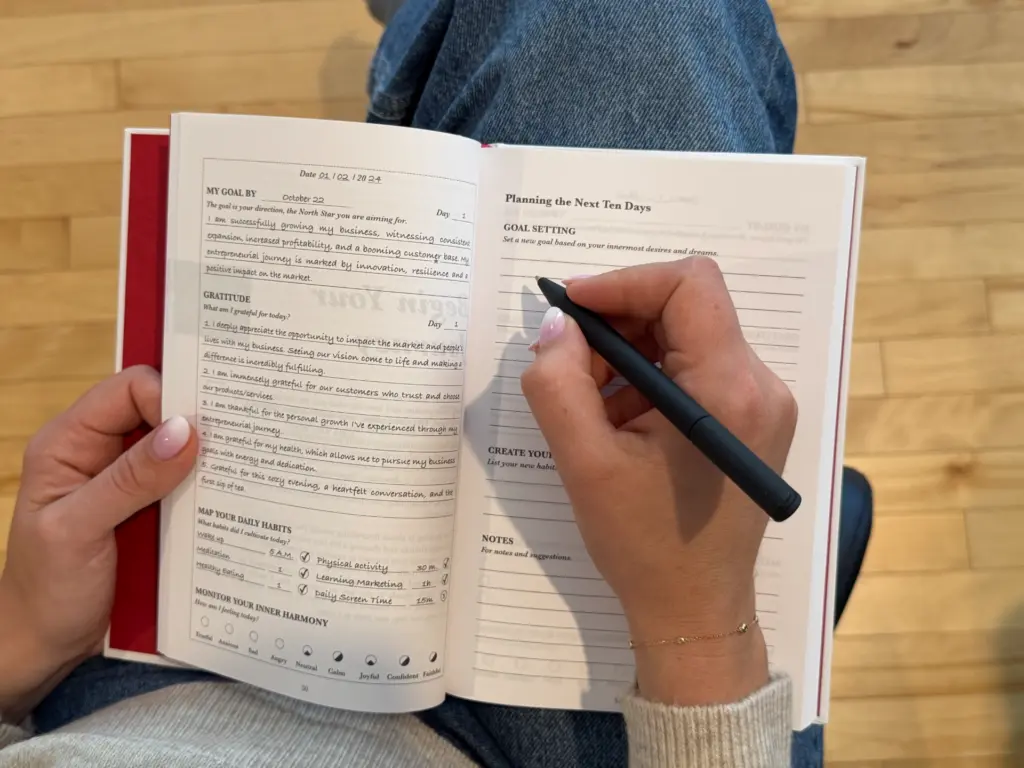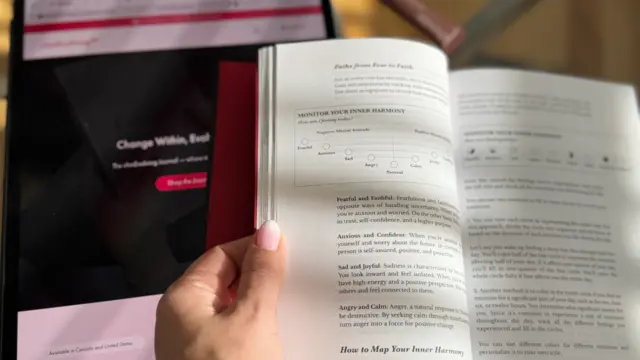Continue shopping
and explore our products below:
Understanding Inner Harmony: The Balance Within

In a world that constantly demands our attention, it’s easy to feel pulled in many directions at once. One moment, you’re calm and focused; the next, you’re anxious, frustrated, or drained. These emotional shifts can leave you wondering: What does it mean to truly feel balanced inside? For ways to stay grounded through change, explore Finding Peace in the Present Moment.
That sense of alignment between your thoughts, emotions, and actions is what we call inner harmony — a peaceful state that allows you to respond to life’s challenges with clarity and calm rather than tension or fear.
To connect gratitude with emotional balance and mindful living, explore the Gratitude Journaling Guide — a complete resource on how daily reflection creates inner harmony and lasting peace within.
What Is Inner Harmony?
Inner harmony is the feeling that your inner world is working together, not against itself. It’s when your mind, body, and emotions move in the same rhythm — like different instruments playing one melody. You can nurture this rhythm by practicing The Art of Slowing Down and giving yourself room to breathe.
You don’t need to be happy all the time to have inner harmony. True harmony includes every emotion, even the difficult ones. It’s about awareness and acceptance — understanding what you feel, why you feel it, and how to guide yourself back to balance when things shift.
When you’re in harmony, you respond instead of react. You create space between what happens and how you choose to act. That space is where peace lives.
Why Inner Harmony Matters
Inner harmony doesn’t just feel good — it transforms how you experience life.
When your inner state is balanced:
- You make clearer decisions because your emotions aren’t in conflict.
- You recover faster from stress or disappointment.
- You connect more deeply with others because you’re grounded in yourself.
- You experience greater focus, patience, and gratitude in daily life.
Harmony is what allows you to move from survival/decline mode into creation mode — where your energy is spent building, growing, and living intentionally instead of reacting to chaos.
The Duality Within: From Fear to Faith
In the iAmEvolving Journal, one section invites you to track your emotions along a spectrum — from Fearful to Faithful.This exercise helps you see how your mindset moves between the extremes of negative and positive emotions throughout your day.

Every feeling exists on this line:
Fearful → Anxious → Sad → Angry → Calm → Joyful → Confident → Faithful
When you begin observing where you are on this scale, you start to notice patterns. Maybe you often live between Anxious and Calm, or maybe you swing quickly from Confident to Fearful.
Awareness is the first step toward balance. You can’t change what you don’t see. By writing down your emotional state each day, you’re teaching your mind to recognize imbalance and gently guide yourself back toward peace.
How to Reconnect With Your Inner Harmony
You can’t control every situation, but you can always return to your center. Here are simple, practical ways to restore harmony when you feel out of alignment:
1. Pause and Breathe Intentionally
When life feels overwhelming, take one full breath — in through your nose, out through your mouth. Then take another.
Understanding inner harmony begins when you stop trying to fix yourself and start listening to yourself.
Peace isn’t found — it’s remembered.
Breathing is the bridge between your body and mind. It calms your nervous system and tells your body you are safe. Even a few slow breaths can reset your energy and bring you back into the present moment.
2. Journal Your Emotions

Use your journal to check in with yourself. Ask:
- What am I feeling right now?
- What might this emotion be trying to tell me?
- What do I need to feel calm again?
Writing down your emotions helps release them. The iAmEvolving Journal offers space to track your feelings daily — not to judge them, but to observe them with compassion.
3. Align Thought and Action
When your thoughts and actions disagree, inner tension grows. If you tell yourself you want peace but continue rushing, multitasking, or worrying, your actions pull you away from balance.
Start small: do one thing each day that supports your peace — a quiet walk, a moment of gratitude, or simply saying no to something that drains you.
4. Create Quiet Moments

Inner harmony thrives in stillness. Spend a few minutes each day without noise, screens, or distractions. You might sit in silence, meditate, or simply look outside and notice the world around you.
The goal isn’t to empty your mind but to listen to it — to hear what’s beneath the surface thoughts that often go unnoticed.
5. Practice Emotional Neutrality
Neutrality doesn’t mean indifference. It means you don’t get swept away by every emotion that arises. You acknowledge it, breathe through it, and choose how to respond.
When you learn to meet emotions without labeling them as “good” or “bad,” you stop resisting life — and that’s where harmony begins.
The Role of Self-Compassion
Inner harmony can’t exist without kindness toward yourself. Reflection leads to growth; discover why in Why Personal Growth Starts with Awareness.
Self-compassion is what allows you to begin again. It’s the quiet reminder that you’re human, evolving, and learning.
Each time you notice imbalance and return to calm, you’re strengthening the muscle of awareness. Over time, peace becomes your default, not your exception.
Using Journaling as a Daily Anchor
The iAmEvolving Journal includes a space called “Monitor Your Inner Harmony.” It’s a simple yet powerful tool: a visual scale that helps you see where you are emotionally each day.
Each circle on that scale — from Fearful to Faithful — represents more than an emotion. It’s a doorway to understanding how your mindset shapes your life.
By recording these small reflections daily, you’ll start to see how external events influence your internal world. Over time, you’ll begin responding differently — not because life got easier, but because you grew stronger inside.
The Subtle Power of Awareness
Inner harmony isn’t something you achieve once. It’s something you practice daily.
Every time you pause to breathe, notice your feelings, or write them down, you’re rewiring your mind toward awareness instead of autopilot. These are Signs You’re Growing — proof that harmony develops through gentle attention.
Awareness creates choice. And choice creates peace.
When you understand that harmony isn’t about control but connection — to yourself, to the present moment, to life — everything begins to shift.


